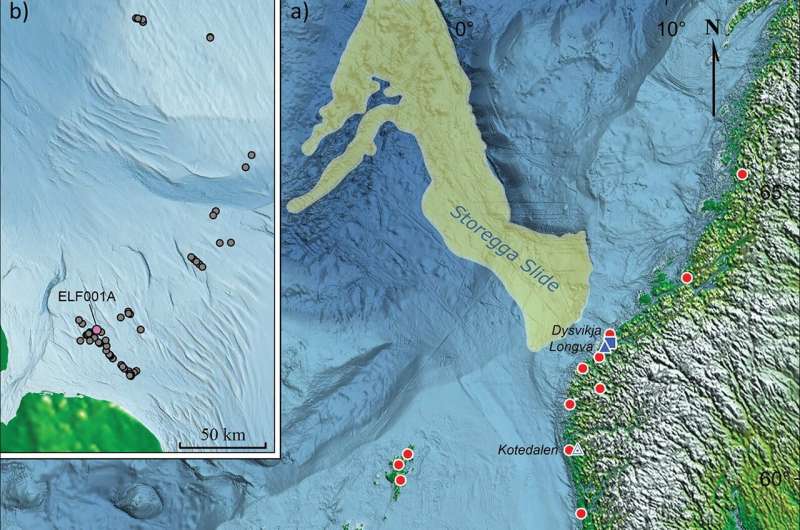December 2, 2020 report
Sediment cores from Dogger Littoral suggest Dogger Island survived ancient tsunami

A team of researchers affiliated with several institutions in the U.K. has found evidence that suggests the ancient Dogger Island survived a tsunami approximately 8,150 years ago. In their paper published in the journal Antiquity, the group describes their analysis of core samples taken from the sea bed where Dogger Island was once located and what they found.
From approximately 110,000 to 12,000 years ago, the Earth experienced a glacial period—the ice buildup led to falling ocean levels, exposing land around the globe. One of those land areas was a fertile plain located in what is now the southern part of the North Sea—it connected Europe and England and has been named Doggerland. As the planet warmed and the ice melted, Doggerland began to disappear beneath the sea to the extent that by approximately 8,200 years ago, almost all of it was below the sea. The exception was Dogger Island and its surrounding archipelago. Then, approximately 8,150 years ago, an underwater slide occurred off the coast of what is now modern Norway, which created a tsunami that reached what had once been Doggerland. Prior research had suggested the giant wave inundated Dogger Island and the archipelago and left it permanently underwater. In this new effort, the researchers have found evidence that much of the island survived the tsunami, which then disappeared many years later due to rising ocean levels.
The work involved collecting core samples from the sea bottom in areas that used to be part of Dogger Island (now called Dogger Littoral) and looking for evidence of the tsunami. The researchers found traces of material pushed around by the tsunami, such as broken shells. But this evidence was only found in low-lying parts of the island. Cores taken from the higher parts of what had once been an island had no such debris, indicating that the tsunami had not washed over the whole island. The researchers suggest that higher elevations of the island survived the tsunami—it was only the lowlands and valleys that were covered. And this suggests the island existed longer than previously thought, possibly impacting the movement of Neolithic farmers from Europe into England.
More information: James Walker et al. A great wave: the Storegga tsunami and the end of Doggerland?, Antiquity (2020). DOI: 10.15184/aqy.2020.49
Journal information: Antiquity
© 2020 Science X Network




















